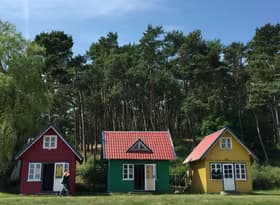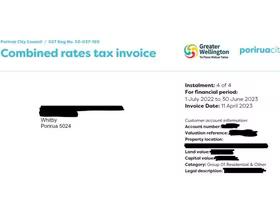
The social housing crisis has not ended yet
Firstly, the good news: data from the Ministry of Housing and Urban Development (HUD) shows that the number of applicants on the government’s Housing Register, waiting for a suitable social house to become available has declined by 3,583 people, or 13%, since the peak in April this year. The figure has now recorded its first annual decline since early 2016.
However, it’s hard to know how confident to be in the emerging downward trend. Two-thirds of the decline in the waiting list occurred in September and October, and the Ministry of Social Development has noted that system improvements have led to big increases in the number of applicants being removed from the Register compared to previous months. In other words, better follow-up processes mean that people are being contacted more regularly and quickly to see whether they are still seeking a placement in social housing placement, and being removed from the Register if they no longer require one. So the reduction in the number of people on the waiting list is probably more due to system changes than a genuine decline in need.
Even if the social housing waiting list is starting to shrink, there’s an awfully long way to go to get it back to “normal” levels. Chart 1 shows that the waiting list is still more than seven times the size it was back in June 2015, representing an additional 20,299 households waiting for placement in a property.
The figures are even more concerning when we look at them on a territorial authority basis. Chart 2 shows the cities and districts where the waiting list is largest compared to the overall population, as well as an additional six areas that recorded the biggest increases in this measure between June 2021 and June 2022. There is a disturbing concentration of unhoused applicants across the Waikato, Bay of Plenty, Gisborne, and Hawke’s Bay regions, stretching beyond Rotorua’s well-documented issue of large numbers of people being provided emergency housing in motels. Our Regional Wellbeing Report, published in 2019, reinforces that many of these areas are the same ones that also have poor wellbeing outcomes.
These regional disparities are reinforced by the figures in Chart 3, comparing the social housing waiting list with the stock of public housing by region. The number of people on the Housing Register in Bay of Plenty represents 75% of the region’s public homes. No other region has a figure above 54%.
Addition of new public homes is a drop in the bucket
Over the last few years, the government has made much of its increased state house building programme. In one sense, the rhetoric is right: Chart 4 is a long-term graph of dwelling consents issued to “general government institutions” and shows a substantial lift from under 700pa in 2016 to an average of almost 2,200pa over the last five years. Last year’s consent total of 2,822 was the highest since 1975. Although these figures are not a perfect match for HUD’s data on the construction of new public houses, they are similar enough to provide a good long-term indication of activity.
In the year to June 2023, the government plans to add 2,969 new public homes (net of properties being removed from the stock of public housing), with 2,559 being built by Kāinga Ora and the remainder by community housing providers. Even if we assume no further increase in the number of applicants on the Housing Register, it would take over six years of construction and applicant placement at that rate to get the waiting list back down to 2017 levels.
Furthermore, the government’s focus on redevelopment and expansion of the public housing stock in Auckland means that people in other regions face little hope of homes becoming available anytime soon. Chart 5 shows that the construction plan in Auckland represents enough to house almost a quarter of the region’s Housing Register applicants. Apart from Canterbury, no other regions have additions planned equivalent to more than 11% of their waiting lists.
Of course, moving people out of social housing and into privately provided accommodation, where viable, is a key element of overall housing policy. It is also an outcome that should become more achievable as the overall housing supply continues to increase following the high building consent numbers of recent years, as well as some affordability improvements occurring as house prices fall. But even allowing for this dynamic, it seems unlikely that Rotorua’s emergency housing crisis, or similar housing shortages in other parts of the country, are going to be resolved any time soon.
More building is necessary and would be timely for the industry
We have previously advocated for the government to consider increasing its state house building programme when the residential industry is facing a sharp downturn, such as following the Global Financial Crisis in 2008/09, or as was expected to occur when COVID-19 first struck in 2020. This sort of countercyclical government policy would help to mitigate the traditional boom-bust nature of construction activity and provide a greater degree of stability for businesses in the industry. Given the number of applicants currently waiting for a social house to become available, we believe an increased focus on significantly expanding the social housing stock would be a better use of government money than continuing to pump money into motels with no end in sight.
It might seem odd to advocate for the government to consider more public home building when residential consent numbers are close to all-time highs and the industry’s capacity is highly stretched. However, the indicators of a sharp downturn in activity during 2023 and 2024 are flashing red: plunging house prices, soaring building costs, rapidly rising interest rates, and almost no population growth. And with the wheels of government taking time to get going, the time to start taking action is now – not when activity is already falling sharply.






















